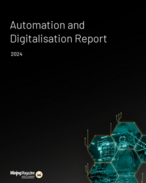The now operational facility will explore issues related to the coupling of fuel cell and gas turbine technologies.
Combined systems of turbines and fuel cells are expected to meet power efficiency targets that will help eliminate environmental concerns associated with the use of fossil fuels for producing electricity and transportation fuels at a competitive cost.
A fuel cell is an electrochemical device that produces electricity from hydrocarbon fuels
without combustion, while a turbine produces electricity when steam or hot gases expand, spinning the turbine blade.
When the two devices are combined into an integrated power-producing system, the combined system achieves fuel efficiency and emissions performance that are beyond the reach of any single standalone system, said NETL.
Hyper facility researchers will look at controlling the flow of power from both the fuel cell and turbine during load changes, which is expected to be more complicated than in conventional power systems.
"Others have shown that a fuel cell can be coupled to a turbine at a steady state. We're going to show how to make it work while the electrical load is changing," said NETL scientist David Tucker, who oversees the Hyper facility.
"In some hybrid configurations, fuel cell flows cannot be abruptly controlled, yet at times the energy input to the turbine needs to be quickly adjusted to meet changes in load without over or underspeed problems," said Tucker. "A variety of strategies are possible to address this issue, such as loading devices, energy storage devices, or defining new control strategies."
In addition to planned NETL studies, the Hyper facility and modeling results are available for public research collaboration.
























